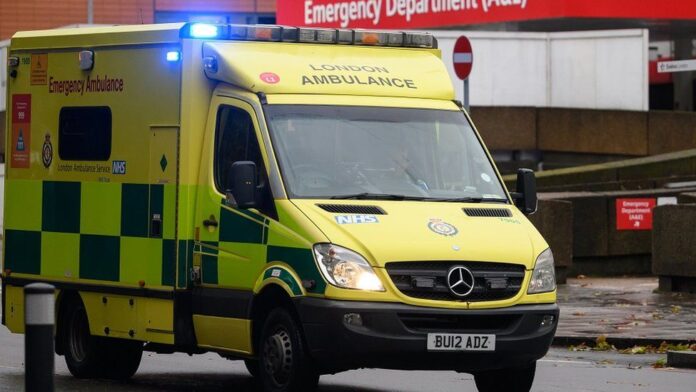Pressures on the NHS are at an all-time high. Several factors have impacted the organisation at every level for many years and the lasting impacts of the pandemic continue to stretch its resources ever thinner. Headlines have been dominated recently by strike action in various professions, but the one that’s been most unusual is the action taken by health and social care staff. Healthcare strikes on this scale are largely unprecedented in the UK and they’re symptomatic of deeper, underlying issues that relate to the overall pressures on the NHS. All this pressure can and probably will have an impact on public health in the short and long term – below we explore how this is manifesting in recent events.
Healthcare Professionals Feel Unsupported
A significant justification for the health and social care strikes has been surrounding working conditions, not just pay. This is largely due to the pressures that NHS staff are under with staffing shortages, capacity issues and dwindling resources. Any work environment where you aren’t given the support or resources you need to do your job properly is likely to be an extremely stressful one, on top of what is already a challenging line of work – and this is what NHS staff have been dealing with for years.
An alarming report covered by The Guardian stated that up to 40% of doctors and dental professionals could quit healthcare by 2028 due to mounting pressures and exhaustion. If the figure turns out to be anywhere near that reported in the article, the NHS may well become unsustainable and public health will suffer incomprehensibly.
Patients Might Not Get the Level of Care They Require
The consequence of healthcare professionals not feeling supported or valued in their profession could be a damning one for public health as the relationship between staff and patients becomes ever more strained. This runs the risk of care procedures and processes falling short of expectations, leaving the NHS liable to medical negligence claims and potentially lives lost due to all the contributing factors.
Not only that, a lack of care capacity because of bed and staff shortages means that patients are less likely to receive adequate care in a reasonable time. We’ve seen reports of A&E waiting times moving past 12 hours which not only represents the strain NHS staff are under but the impact seen on patient care in emergencies. The current situation in A&E isn’t far from what’s happening in all areas of health and social care – the severity and challenges of each care stream just differ.
What Can Be Done to Improve the Situation?
There’s obviously been a systemic failure to support and provide the NHS with what it needs to run sustainably – including (but not limited to) staff, funding and resources. Resolving staffing shortages and increasing care capacity would be a huge step to ease the pressure on individual health and social care professionals, but that’s not an easy or cheap fix and could take years to resolve.
Allowing healthcare professionals to do their jobs to the expected standard and without the pressures mounting on the system as a whole will be key to reversing the strained relationships between staff and patients, decreasing the likelihood of inadequate care in all areas of the public health system. Ultimately, this change has to come from the top and the government needs to be willing to implement strategies to ease the many concerns that are present.
Read Also
- How to Drive Growth Through Customer Centricity in HealthcareThe world of healthcare is changing in big ways. Consumers are now stepping up and taking charge of their health journeys. This change is happening now for important reasons. The U.S. health and wellness market is huge, projected to be over $6 trillion in 2025. This growth is fueled by rising out-of-pocket costs and more… Read more: How to Drive Growth Through Customer Centricity in Healthcare
- Maximizing Digital Reach for Podiatry Clinics in Local HealthcareMaximizing Digital Reach for Podiatry Clinics in Local Healthcare As the healthcare industry evolves, mobile marketing becomes indispensable for practitioners. Podiatry clinics, focusing on foot and ankle care, must adapt to digital strategies to engage patients effectively. Implementing tailored SEO practices is crucial for these clinics to thrive in an increasingly competitive market. Digital marketing… Read more: Maximizing Digital Reach for Podiatry Clinics in Local Healthcare
- Leveraging Virtual Medical Assistants to Maximize Operational Efficiency in HealthcareIn the increasingly complex and fast-paced world of healthcare, operational efficiency is critical. Doctors and healthcare administrators are faced with numerous challenges, from managing patient scheduling and medical billing to adhering to stringent regulatory compliance and insurance claims processing. These tasks, while essential, often divert time and resources away from the core mission of providing… Read more: Leveraging Virtual Medical Assistants to Maximize Operational Efficiency in Healthcare
- Optimizing CT Protocols: The Hidden Key to Efficiency and Cost Savings in RadiologyIntroduction: Why CT Protocol Optimization Matters Computed Tomography (CT) is a cornerstone of modern diagnostic imaging, providing critical information across nearly every medical specialty. However, maximizing the value of CT — both clinically and financially — requires more than just advanced hardware. The real secret lies in the optimization of CT protocols. When CT protocols… Read more: Optimizing CT Protocols: The Hidden Key to Efficiency and Cost Savings in Radiology
- Hospital Discharge Accuracy Improves With Daily Advisor InvolvementThe hospital discharge process has a big effect on patient recovery, hospital efficiency, and finances. It requires careful planning and clear communication between team members to make sure patients get the right care when they leave the hospital. Having physician advisors involved at this stage can improve the discharge process by spotting problems that need… Read more: Hospital Discharge Accuracy Improves With Daily Advisor Involvement
- Understanding Clinical Trials: What to Learn and the RoadblocksClinical trials are research studies conducted to determine the efficacy of medical, surgical or behavioral interventions. They are the most commonly used way that researchers assess whether new treatments, drugs or medical devices are safe and effective for use in humans. There are strict protocols governing these studies, and all of this is done in such a… Read more: Understanding Clinical Trials: What to Learn and the Roadblocks







